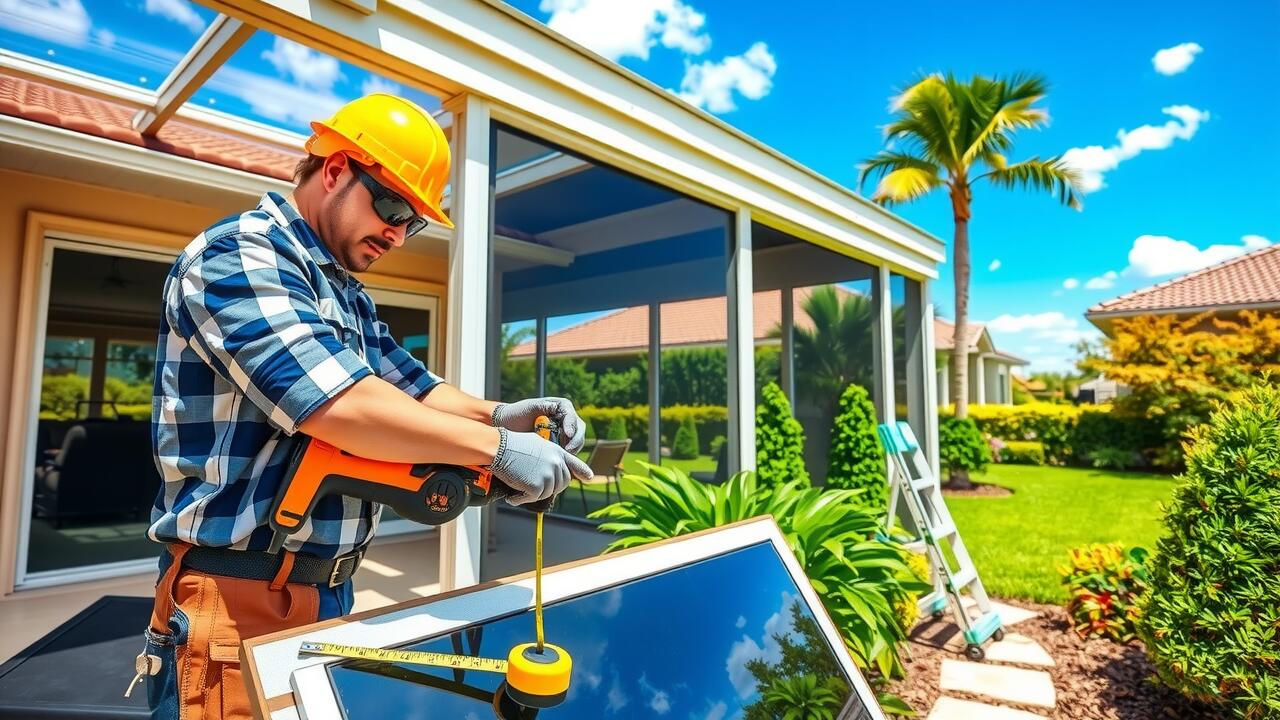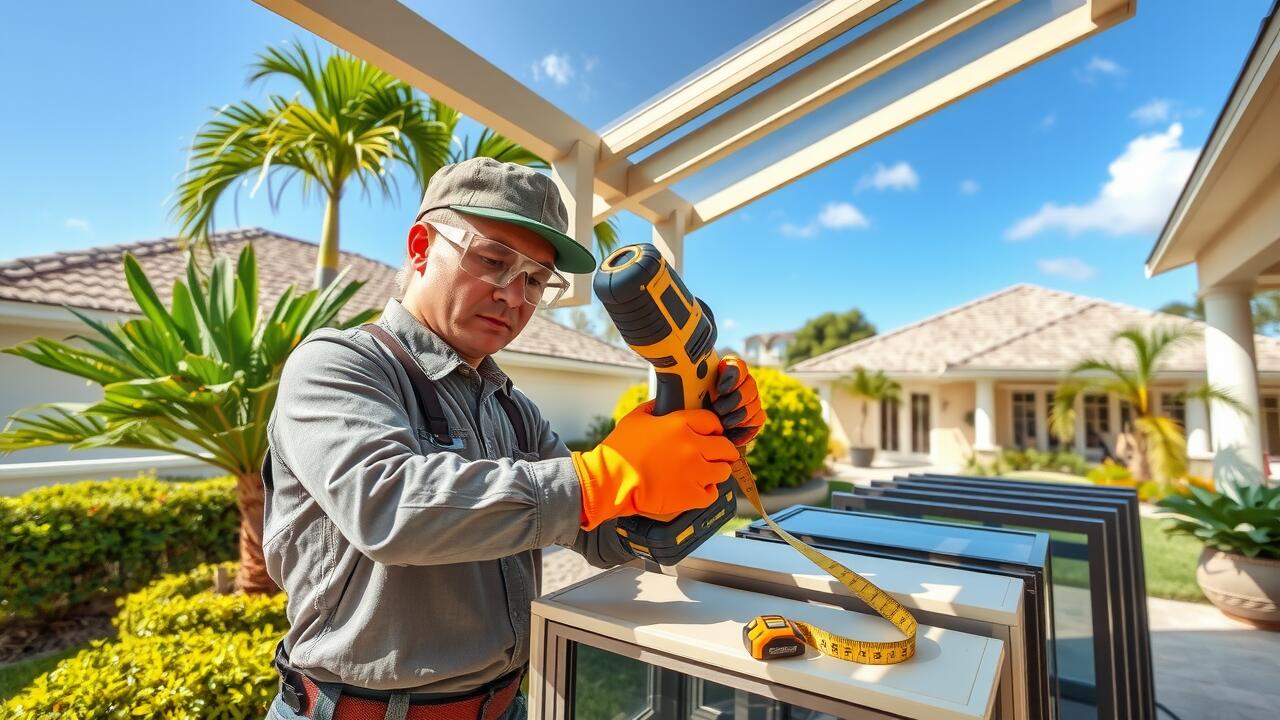
Additional Features
Incorporating additional features into a lanai can significantly enhance its functionality and comfort. Many homeowners opt to add elements such as ceiling fans, lighting fixtures, or outdoor heaters to create a more inviting atmosphere. These enhancements not only improve the enjoyment of the space but also increase its overall value. Lanai enclosures can be customized with these features, allowing for personalization that suits individual needs and preferences.
Another popular addition involves integrating furniture or outdoor kitchens into the design. Comfortable seating arrangements and dining spaces can transform the lanai into a versatile area for entertainment and relaxation. If homeowners choose to include screens or windows, it may provide climate control and protection from pests, making the lanai usable throughout the year. With such options available, creating an ideal outdoor oasis becomes a more attainable goal.
Adding Screens and Windows
Adding screens and windows to a lanai can significantly enhance its usability and comfort. Screens help keep insects out while allowing fresh air to circulate, making the space enjoyable during warmer months. Windows provide an additional layer of protection against inclement weather and can turn the lanai into an all-season area. Various materials, such as aluminum or vinyl frames, are available, which affect both the look and durability of the enclosure. Choosing the right type depends on climate considerations and personal style preferences.
Lanai enclosures can also offer improved aesthetics, with designs that integrate seamlessly with the overall architecture of a home. Customizing the screens and windows can effectively complement outdoor furniture and decor. Homeowners may opt for sliding or hinged designs, allowing for flexible access and ventilation options. This customization ensures that the lanai not only serves functional purposes but also functions as a beautiful extension of the indoor living space.
Permits and Regulations
Building a lanai requires careful consideration of permits and regulations that vary by location. Local building codes dictate specific requirements, including structural guidelines and zoning laws. Homeowners must verify whether their project falls under these codes, especially for lanai enclosures. These enclosures might need to meet certain standards to ensure safety and compliance with neighborhood aesthetics.
Navigating the permitting process can sometimes be tedious, requiring documentation and approvals from various government entities. It’s crucial to check with the local building department to understand the necessary permits for your specific project. Obtaining the correct approvals not only avoids legal complications but also ensures that the lanai enclosures are constructed to safe and established standards.
Navigating Local Building Codes
Understanding local building codes is crucial for anyone considering the addition of a lanai enclosure to their property. These codes can vary significantly from one municipality to another, impacting the design, size, and construction materials allowed. Homeowners should take the time to research specific regulations that pertain to lanai enclosures in their area, as compliance can affect not just safety but also property values.
Navigating the complexities of permits and inspections is another essential aspect of the process. Many local governments require that homeowners submit detailed plans for their lanai enclosures and may even mandate inspections at various stages of construction. Failing to adhere to these local guidelines can lead to costly fines or may even require dismantling the structure if it does not meet the established codes.
Average Cost Estimates
When considering the average cost of building a lanai, several factors come into play, including size, materials, and design complexity. Typically, homeowners can expect to spend anywhere from $15,000 to $30,000 for a standard lanai. This price range covers basic construction and may also include fundamental features such as roofing and flooring. Customization options such as decorative elements or higher-end materials can influence the overall budget significantly.
Lanai enclosures add an additional layer of cost to the project. Screened or glass-enclosed options vary widely in pricing. A simple screened enclosure might add approximately $1,500 to $2,500, whereas a more elaborate glass structure can easily elevate the total expense by $5,000 or more. It’s important to obtain quotes from multiple contractors to ensure a comprehensive understanding of expenses involved in the process.
Regional Price Variations
The cost of building a lanai can vary significantly across different regions of the United States. In coastal areas, where outdoor living spaces are highly sought after, prices tend to be higher due to increased demand and local labor costs. Conversely, in more rural regions, the expenses associated with constructing a lanai may be lower because of reduced overhead and available materials. The differences in construction prices can also stem from varying climate conditions, which influence the choice of materials and design features of lanai enclosures.
Labor costs play a crucial role in regional price variations as well. Areas with a higher cost of living often see increased contractor fees, impacting the overall budget for the project. Additionally, local building codes and regulations can affect pricing, with more stringent requirements potentially leading to higher costs for materials and labor. Homeowners should conduct thorough research to understand these regional factors when planning their lanai enclosures, ensuring they receive accurate estimates based on their location.
FAQS
What is a lanai?
A lanai is a type of porch or veranda that is typically found in tropical or subtropical climates, often featuring a roof and open sides, allowing for an outdoor living space that is partially sheltered.
What factors influence the cost of building a lanai?
The cost of building a lanai can be influenced by several factors, including size, materials used, additional features like screens or windows, local labor costs, and necessary permits or regulations.
Do I need a permit to build a lanai?
Yes, in most cases you will need a permit to build a lanai. It’s important to check with your local building department to understand the specific permit requirements and regulations in your area.
How much does it typically cost to add screens and windows to a lanai?
The cost of adding screens and windows to a lanai can vary widely based on the materials chosen and the size of the installation, but it generally ranges from a few hundred to several thousand dollars.
Are there significant regional differences in the cost of building a lanai?
Yes, there are significant regional price variations when it comes to building a lanai, as labor and material costs can differ greatly depending on your location and local market conditions.
